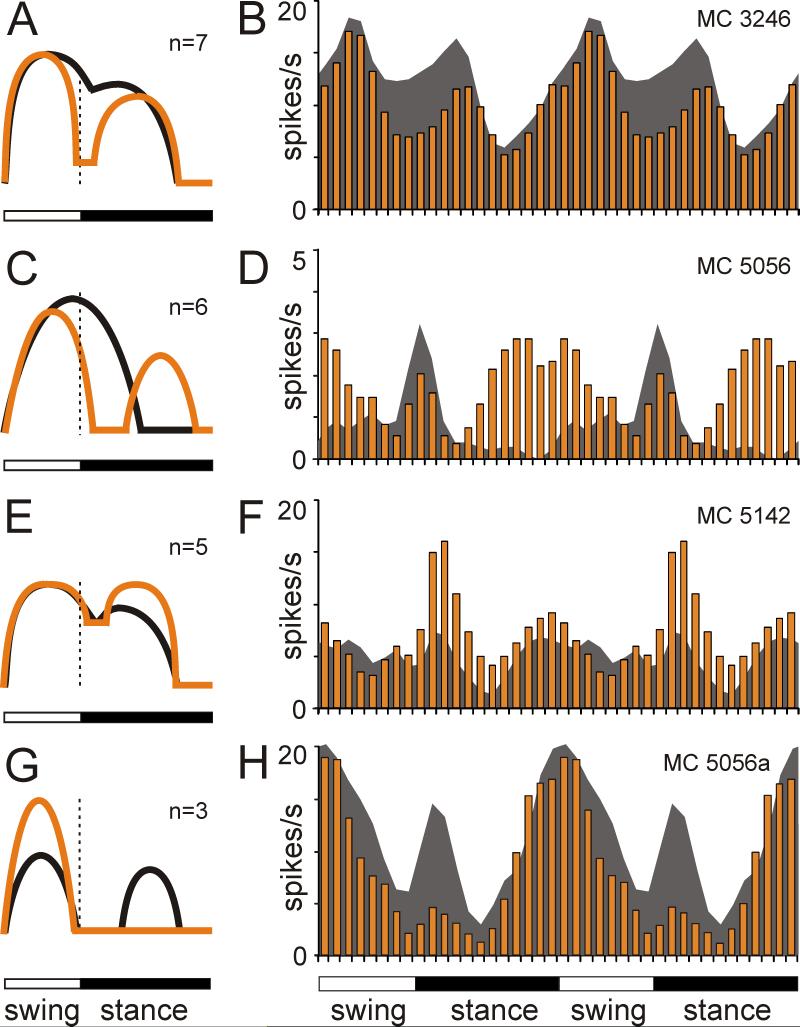Figure 9.
Differences in discharge patterns of neurons during locomotion in the darkness and light. A: A schematic presentation of the most frequently observed types of difference in the discharge pattern. In the light, a subtle trough within the one PEF seen during walking in the darkness deepens and divides the PEF into two. The black line shows activity during walking in the darkness, and orange line shows the activity during walking in the light. The vertical dotted line shows end of swing and beginning of stance phase. B: An example activity of a neuron exhibiting this behavior. The dark gray area histogram shows the activity of the neuron during locomotion in the darkness. The orange bar histogram shows the activity during locomotion in the light. To promote visualization of the difference in activities between two tasks, the stride cycle is shown twice. C, D: Same as A, B but showing the second most frequent type of discharge pattern difference. The transition from one- to two-PRF discharge pattern occurred because in the light a new PEF appeared within the former trough. E, F: Same as above but showing the third most frequent type of discharge pattern change in the light from one to two PEFs per cycle: by an increase in activity within a part of the PEF. G, H: same as above but showing the discharge pattern change from two- to one-PEFs per cycle.

